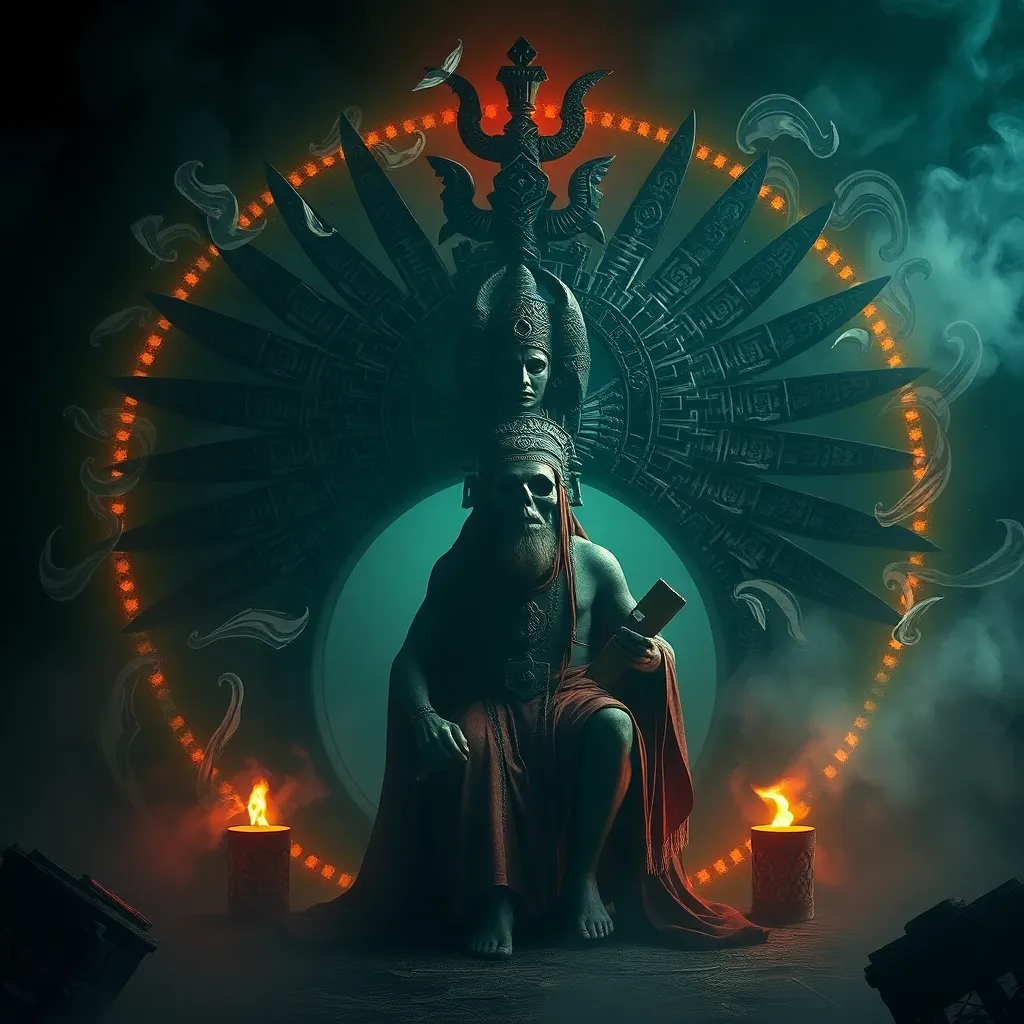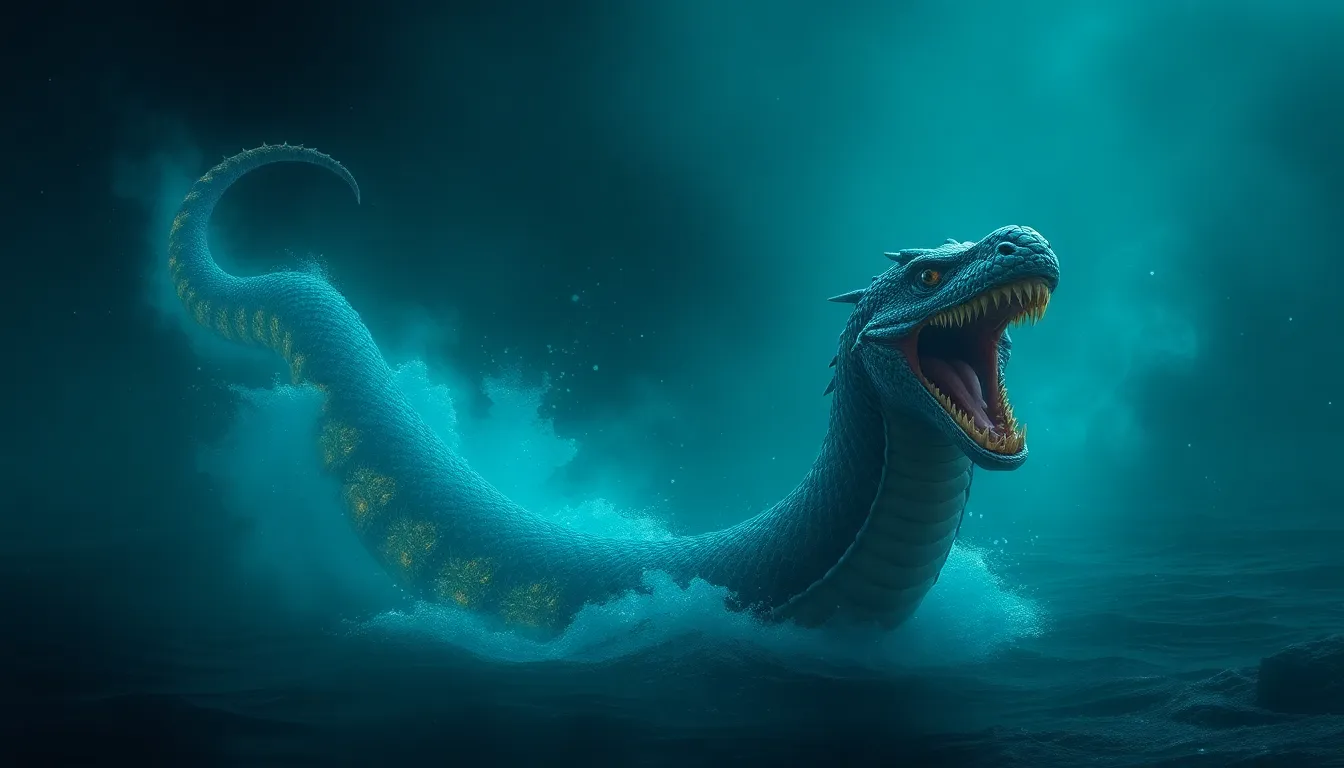The Mayan Concept of Death: Itzamná’s Influence on Rituals and Beliefs
I. Introduction
The ancient Mayan civilization, flourishing in Mesoamerica from around 2000 BC to the arrival of Spanish colonizers in the 16th century, is renowned for its sophisticated culture, intricate architectural achievements, and profound spiritual beliefs. Central to these beliefs was a complex understanding of death and the afterlife, reflecting the importance of the spiritual realm in daily life. Within this cosmology, the deity Itzamná held a pivotal role, influencing rituals and perceptions surrounding death.
Death in Mayan culture was not seen as an end but rather as a transition, with significant implications for the living. Itzamná, often depicted as a creator god and associated with wisdom, healing, and the afterlife, was central to these beliefs, shaping how the Maya approached and understood mortality and the rituals that accompanied it.
II. The Role of Itzamná in Mayan Mythology
Itzamná is one of the most significant deities in the Mayan pantheon, revered as the god of the sky, creation, and the afterlife. His attributes include wisdom, knowledge, and the duality of life and death. Often depicted as an elderly man with a beard and large, expressive eyes, Itzamná embodies the ancient wisdom of the Maya.
Itzamná’s association with creation extends to his role in the afterlife, where he guides souls to their final resting place. This connection to both life and death highlights the dual nature of existence in Mayan beliefs. Furthermore, Itzamná’s relationships with other deities, such as the sun god Kinich Ahau and the underworld deity Xibalba, illustrate a complex interplay of forces that govern life, death, and rebirth.
III. The Mayan Understanding of Death
The Mayans held a unique perspective on death, viewing it as part of a cyclical process rather than a definitive end. The afterlife was considered a continuation of existence, where souls could experience both rewards and challenges based on their earthly lives. Key concepts included:
- The journey of the soul: Upon death, souls embarked on a perilous journey through various realms, including challenges posed by deities and supernatural beings.
- Afterlife realms: The Mayans believed in multiple afterlife destinations, such as Xibalba, the underworld, and Tamoanchan, a paradise for noble souls.
Rituals surrounding death varied significantly between social classes. Nobles typically received elaborate burials with numerous offerings, while commoners had simpler rites. This distinction underscored the social hierarchy and the differing beliefs about the afterlife’s nature based on social standing.
IV. Rituals Associated with Death in Mayan Society
Death rituals in Mayan society were complex and multifaceted, involving various ceremonies and practices that honored the deceased and facilitated their journey to the afterlife.
A. Pre-death rituals and preparations
Prior to death, the Maya often engaged in rituals aimed at preparing the individual and their family for the transition. These might include:
- Consultations with priests or shamans to seek guidance.
- Creating altars adorned with offerings to appease deities.
B. Funerary practices and burial customs
Upon death, the Maya observed specific funerary practices that varied according to social status. Common elements included:
- Embalming and dressing the body, often with personal belongings.
- Burial in tombs or beneath structures, sometimes accompanied by sacrifices.
C. Ceremonies honoring the deceased and Itzamná
Post-burial, ceremonies would take place to honor the deceased, often invoking Itzamná’s blessings for their safe passage. These rituals included:
- Feasting and communal gatherings to celebrate the life of the departed.
- Offerings of food, incense, and ceremonial objects at altars dedicated to Itzamná.
V. Itzamná’s Influence on Death Rituals
Itzamná’s presence was deeply woven into the fabric of Mayan death rituals, shaping practices and beliefs surrounding mortality.
A. How Itzamná shaped the practices around mortality
Itzamná’s teachings emphasized the importance of honoring the dead and performing rituals that recognized the connection between life and death. His influence encouraged elaborate ceremonies that engaged the community in collective mourning and remembrance.
B. Symbolism of Itzamná in funerary art and artifacts
Art and artifacts from the Mayan civilization often depicted Itzamná in contexts related to death and the afterlife. Common symbols included:
- Imagery of Itzamná guiding souls, often accompanied by motifs of the underworld.
- Use of specific colors and materials believed to invoke his blessings during funerary practices.
C. The integration of Itzamná’s teachings in community rituals
The teachings of Itzamná were reflected in community-wide rituals, where collective participation helped reinforce the social bonds and shared beliefs about death and the afterlife.
VI. The Legacy of Mayan Death Beliefs in Modern Culture
Many contemporary Maya communities continue to practice rituals that reflect their ancestral beliefs about death, demonstrating a continuity of tradition that honors Itzamná and the ancient Maya worldview.
A. Continuity of practices among contemporary Maya communities
Modern rituals often blend indigenous beliefs with elements of Christianity, showcasing the resilience of Mayan culture. Practices include:
- Celebrating the Day of the Dead with altars to honor deceased loved ones.
- Performing traditional ceremonies that invoke Itzamná for guidance and protection.
B. Influence on modern interpretations of death and spirituality
The Mayan approach to death has influenced contemporary discussions about spirituality, emphasizing a holistic view of life and death that resonates with many spiritual seekers today.
C. The role of Itzamná in contemporary Maya identity
Itzamná remains a vital part of Maya identity, symbolizing wisdom and the interconnectedness of life and death. His teachings continue to inspire cultural pride and a deep respect for ancestral traditions.
VII. Comparative Analysis with Other Mesoamerican Cultures
The Mayan understanding of death shares similarities and differences with other Mesoamerican cultures, enriching the broader context of ancient beliefs.
A. Similarities and differences in death concepts across cultures
Like the Aztecs, the Maya viewed death as a transition rather than an end. However, the specifics of their afterlife beliefs and rituals varied:
- The Aztecs emphasized the warrior’s journey to the afterlife, while the Maya focused on the soul’s journey through multiple realms.
- Different deities, such as Mictlantecuhtli among the Aztecs, shaped their respective death rituals.
B. The role of other deities and their influence on death
Other Mesoamerican cultures had their deities associated with death, such as the Zapotec god Pitao Cozobi. Each had unique attributes and influenced their societies’ death-related practices.
C. Itzamná’s unique position within the broader Mesoamerican context
Itzamná’s dual role as a creator and guide in the afterlife is distinctive, positioning him uniquely within Mesoamerican mythology. His wisdom and nurturing characteristics set him apart from more fearsome deities associated with death.
VIII. Conclusion
Itzamná’s impact on Mayan death rituals and beliefs underscores the significance of understanding how ancient cultures approached mortality. Through Itzamná, the Maya developed a rich tapestry of rituals and concepts that emphasized the continuity of life beyond death.
Reflecting on these ancient beliefs offers valuable insights into the cultural legacy of the Mayan approach to death, revealing a deep respect for the cycle of life and the importance of honoring those who have passed. As contemporary Maya communities continue to embrace these traditions, the teachings of Itzamná remain a vital part of their cultural identity and spiritual life.



